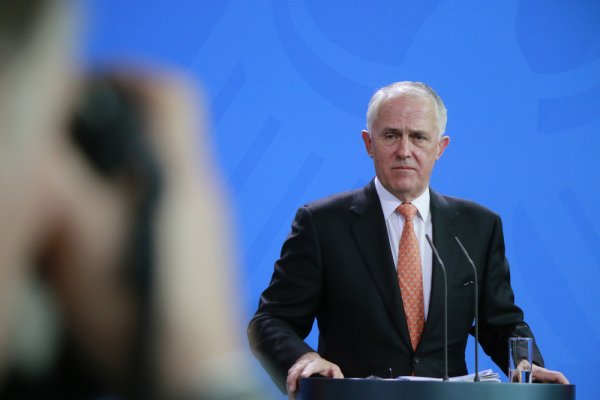Q1. Julie Bishop has vast leadership experience. She’s been the deputy leader for 11 years, she’s the Liberal party’s most senior woman. The polls showed that voters were on her side. Why do you think the top job has once again gone to a man?
I think the reason it has gone to a man, any man, is that Julie Bishop is largely considered a ‘wet lib’, she’s slightly progressive in terms of how Liberal MPs can be progressive, and I feel like this backlash against Turnbull in part was because of his ‘progressive’ values. The conservative Liberals didn’t like that, and they wanted to replace him with ‘one of them’. So, in part, Bishop didn’t win because her values were similar to Malcolm Turnbull’s.
The boys’ club prevails and the women get ignored
Looking through a gendered lens, another reason she lost was because I don’t think the Liberal party are ready for a woman leader. Time and time again they have shown that they don’t really care or want to put women in high up positions and they don’t want to put them in safe seats. Abbott’s cabinet only had one woman, and that was Julie Bishop herself. Malcolm Turnbull, as a progressive liberal, is more likely to have a few more women in his cabinet, but on the whole, especially from the conservative side, it’s a boys’ club. The boys’ club prevails and the women get ignored.
Q2. To what extent is this a problem within the party – Does the Liberal party have a ‘woman problem’ as some have argued, or does this actually reflect our societal values and norms more broadly?
I don’t think it’s reflective of the society as such, maybe more so of the Australian media. A lot of people said since Gillard got out in 2013, that they’ve come to respect her and what she brought to the leadership, and I think a lot of people are ready for another woman Prime Minister. But it all depends on the media as well, because the media influences society and our opinions. I think in general, the Australian public – and if we look at the World Values Survey, it’s generally in favour of women having as much right as men to be leaders. This is doubly so for women than men.

Lady Macbeth? Media analysis revealed that Gillard was often compared to Shakespearean murderers. Image: DFID – UK Department for International Development/Russell Watkins
Q3. Your research comparing Julia Gillard and Malcom Turnbull’s media coverage around leadership coups revealed some stark gender differences. Where Turnbull had ‘taken back the reins’, Gillard was a backstabbing murderer’. Is this still an issue? How far have we come from those days?
It doesn’t feel like it’s changed much. Maybe the frequency and intensity has slightly decreased. But I have seen media accounts of Bishop being described as ‘Lady Macbeth’, whereas Dutton and Morrison were portrayed in a more neutral, non-gendered manner. And that very much came through in my analysis of Gillard, she was often compared to Shakespearean murderers, especially Lady Macbeth. It’s funny how they use the same character in their coverage of two women politicians and potential political leaders.
So the media coverage is very much gendered still, and I think it would still be quite similar to the treatment that Gillard received. It might have decreased slightly because the media does have a tendency not to portray conservative MPs nearly as harshly as Labor MPs because of the conservative slant of our media. Having said that, the phenomenon hasn’t changed, it hasn’t gone away, and it would still be the case for the next woman prime minister, and probably the prime minister after that.
One article of Gillard said that she was a fantastic prime minister, very competent, and had flawless skin and many boyfriends
However, the thing with media coverage of women politicians is that it doesn’t matter whether it’s positive, negative or neutral, it all uses gender in the political coverage. And that’s what I found in the Gillard case, quite often the positive or neutral articles bring it back to their gender. For example, one article of Gillard said that she was a fantastic Prime Minister, very competent, and had flawless skin and many boyfriends.

Peta Credlin referred to Bishop as ‘Malcolm Turnbull in a skirt’
Q4. Tony Abbott’s former chief of staff, Peta Credlin, referred to Julie Bishop as ‘Malcolm Turnbull in a skirt’. What do you make of that?
Obviously she was saying that Bishop is progressive like Turnbull therefore they have the same policies and they have a similar leadership style, but using a gendered imagery in her statement just further highlights Bishop as a woman. It emphasises her gendered difference and implies that she doesn’t belong in the Prime Ministerial seat (which has almost always been reserved for men) because of her gender. It just brings the focus back onto her gender, which is delegitimising.
The comparisons between Gillard and Bishop are quite interesting. Bishop only put up her hand on Thursday afternoon and she’s already experienced gendered media coverage, and we’ve seen her as less legitimate than the other two male candidates, even though I would argue that she is probably one of the most competent to run for leadership.
Q5. There’s been a lot of talk about the glass cliff recently, where women are more likely to achieve leadership roles during times of crisis and therefore end up overrepresented in precarious positions. Is this an issue in Australian politics?
I think the Bishop example would be a perfect example of the glass cliff scenario. I think Gillard to an extent also experienced that phenomenon. But with the Bishop case, the boys club made the mess, and she comes in and sacrifices her career, and then cleans it up. And this happens time and time again, not only in Australian politics, but also in other leadership positions.
The metaphor of the glass cliff first came out of feminist corporate leadership discourse, and it’s been applied to prime ministers because this is generally the case for women. Neither parties have put a woman up for the job, she always comes in at the time of crisis and that’s really depressing.





